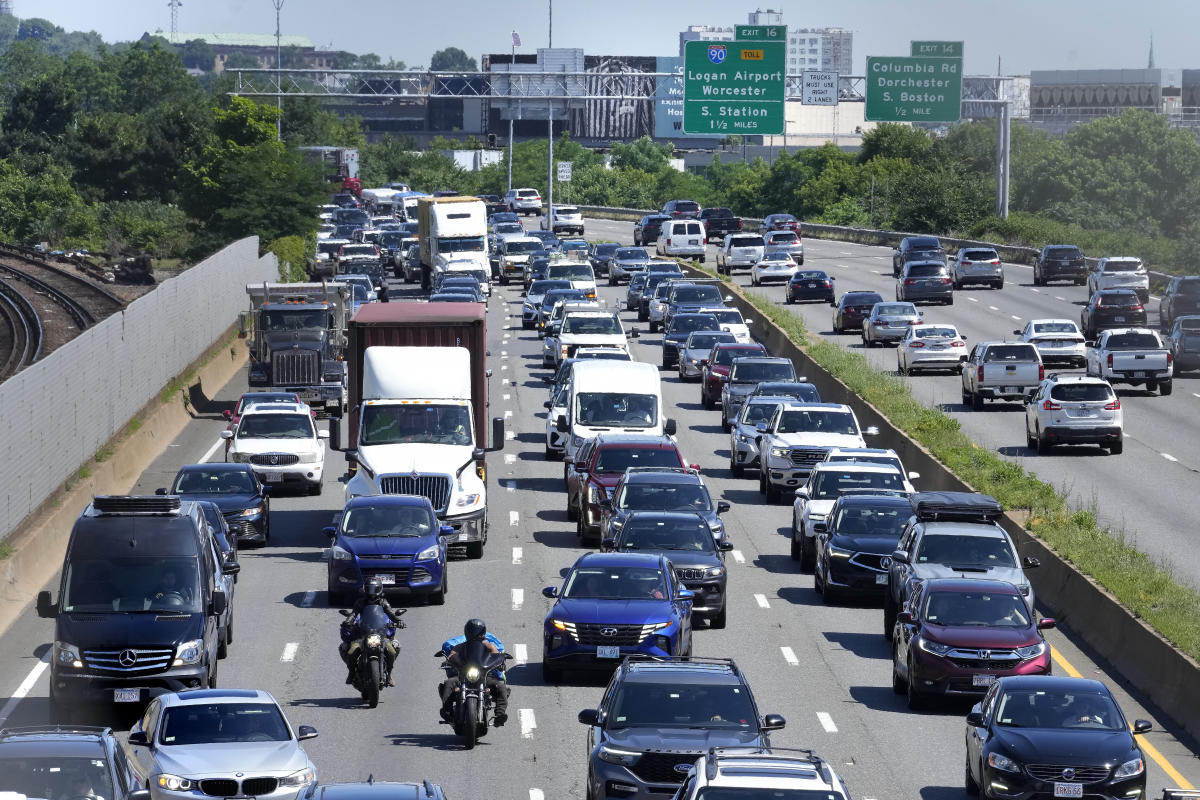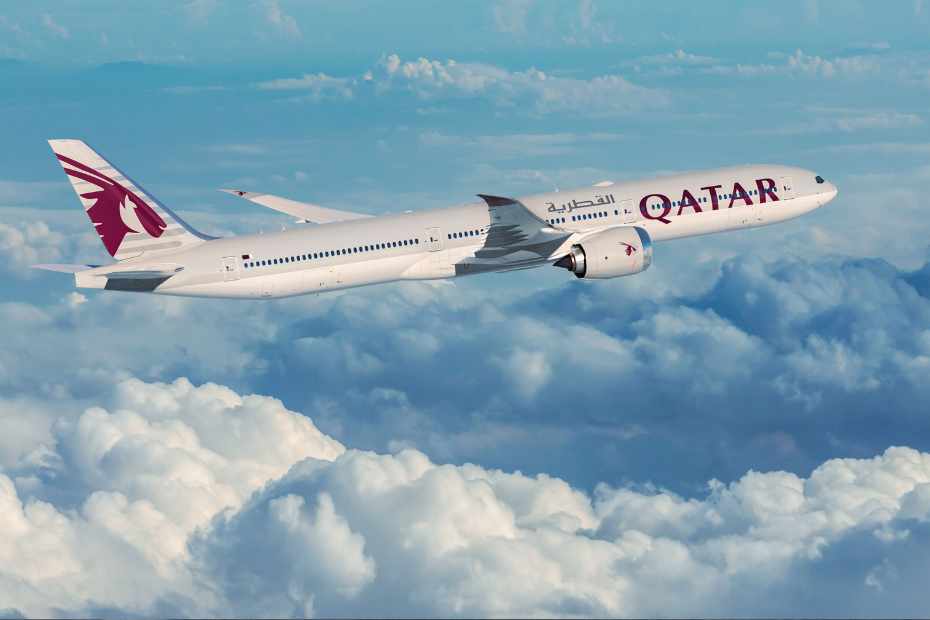Traveling over Labor Day weekend? Have a back-up plan for cancellations and delays, and be patient

Many children have gone back to school in the U.S., and the days are getting shorter, but there is still one more excuse to use the swimsuits and beach towels before packing them up: Labor Day.
Airports, highways, beaches and theme parks are expected to be packed for the long holiday weekend as a lot Americans mark the unofficial end of summer the same way they celebrated the season’s unofficial start: by traveling.
The Transportation Security Administration anticipates screening more than 17 million people between Thursday and next Wednesday — a record for the Labor Day period.
AAA says bookings for domestic travel are running 9% higher than last year for the holiday weekend, while international trips are down 4%.
American Airlines plans to have its largest Labor Day weekend operation ever and expects a 14% increase in passengers compared to last year.
If you are traveling to get a last blast of summer, here is a rundown of what you need to know.
What are prices like?
Motorists are getting a break on gasoline compared with last year. The nationwide average was recently $3.44 per gallon, compared to $3.86 a year ago, according to AAA.
For electric vehicles, the average price for a kilowatt of power at an L2 commercial charging station is about 34 cents. The average is under 25 cents in Kansas and Missouri but tops 40 cents in several states, including New Hampshire, Tennessee and Kentucky. Hawaii is the costliest, at 56 cents.
Average airfares in July were down 7.1% from June and 2.8% from July 2023, according to the government’s consumer price index. The trend appears to be accelerating as the peak summer-vacation season comes to an end.
“Now we’re falling into that traditional fall season when demand slumps, and you’re also seeing that in airfares,” said Steve Hafner, CEO of the travel metasearch site Kayak. “Airfares are down from the summer about 26% already, and they’re down even from the previous fall, about 4%.”
When is the best time to hit the road?
If you plan to start your drive on the Thursday or Friday before Labor Day, you will be sharing the road with commuters. You might want to leave before morning rush hour or even in the evening to avoid jams.
Transportation-data provider INRIX says the worst time to travel by car on Thursday will be between 1 p.m. and 7:30 p.m., and on Friday between 2 p.m. and 6 p.m. That flips on Saturday, when you’ll want to avoid driving between 8 a.m. and 11 a.m.
For the return trip, pretty much all day Monday — from 11 a.m. to 8 p.m. — will be a slog, according to INRIX.
And watch out for risky drivers. New data from Arity, part of insurance giant Allstate, indicates that speeding over 80 mph is up 83% and “very high speeding” — faster than 100 mph — is up more than 50%.
In a surprising twist, however, Arity says distracted driving has dropped on the last three Labor Days.
When will airports be busiest?
Friday, according to the TSA. The agency expects to screen 2.86 million people that day. While an impressive number, it would not even rank in the top 15 days in TSA’s history. The single-day record of 3.01 million was set on July 7, the Sunday after Independence Day.
TSA says it has enough screeners to keep the time it takes to get through regular lines to 30 minutes or less and to no more than 10 minutes for PreCheck lines.
American Airlines says Thursday and Friday will be its busiest days, with 6,400 flights per day, followed by Labor Day itself, when the carrier has 6,300 scheduled flights.
What should I do if my flight is delayed or canceled?
First, check your itinerary before leaving for the airport. It’s better to be stuck at home than stranded at the airport.
If your flight is canceled, the airline might automatically rebook you. That might not be the best option.
“Get on the phone (to the airline’s help center), get in front of an agent, reach out to the airline via social media if you have to, but find out what the other options are,” says Julian Kheel, the founder and CEO of Points Path, a browser extension that lets users compare fares with deals available using frequent-flyer points. “You can almost always find another option that may work better than the one offered by the airline.”
Kheel said agents at the airport have more leeway to help, but they might be inundated if there are many canceled flights. DIY rebooking on the airline website or app might be faster, he said.
Phone tip: Some experts say if the airline has international help numbers, call one of those to get through more quickly than on the U.S. line.
What about refunds and reimbursement?
Airlines are required to provide refunds — including for extra fees paid — to passengers whose flights are canceled for any reason. However, they are not required to pay cash compensation, and no major U.S. airlines do. Only Alaska, Southwest and JetBlue even promise travel vouchers if the cancellation is their fault.
If you’re stuck overnight, ask the airline about covering the costs of a hotel, meals and ground transportation. All major U.S. airlines except Frontier promise to help with all three for “controllable” disruptions, according to the Transportation Department’s airline-policy dashboard. However, those commitments don’t apply to cancellations caused by weather.
Keep receipts for all out-of-pocket expenses in case you can file a claim later.
A few final tips
— Leave early. Everything will take longer than you expect, including getting through airport security. If you plan to park at the airport, make sure there will be spaces available when you arrive — many airports now post that information online.
— Watch the weather. Even if skies are clear at home, there could be storms at your flight’s destination or along your road route. Have a backup route.
— Be nice. Flight cancellations and bumper-to-bumper traffic are frustrating, but you won’t be the only one who is stuck. Customer-service agents are busy during peak travel periods, so it’s important to be patient and respectful while they try to help you.
___
Koenig reported from Dallas. Business Writer Wyatte Grantham-Philips in New York contributed to this report.
Related
Turkish Airlines and Qatar Airways Suspend Mogadishu Flights Following US…
Home » Airlines News of Qatar » Turkish Airlines and Qatar Airways Suspend Mogadishu Flights Following US Embassy Terror Alert, Raising Security Concerns at
Local tourism destinations grow fast
Men sit at the Doha Corniche backdropped by high buildings in Doha on March 3, 2025. Photo by KARIM JAAFAR / AFP DOHA: Local tourism destinations are g
Hajj, Umrah service: Qatar Airways introduces off-airport check-in for pilgrims
Image credit: Supplied Qatar Airways has introduced an off-airport check-in
IAG, Qatar Airways, Riyadh Air, Turkish Airlines, Lufthansa & more…
Turkish Airlines – a Corporate Partner of the FTE Digital, Innovation & Startup Hub – is charting a course to rank among the top 3 global airlines for












